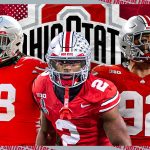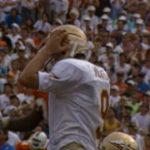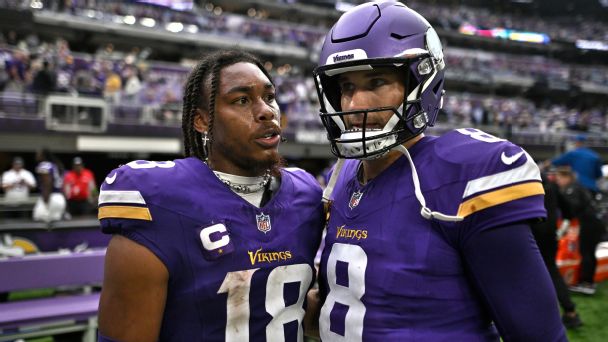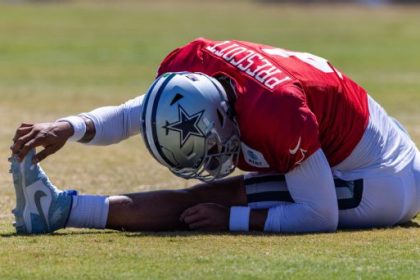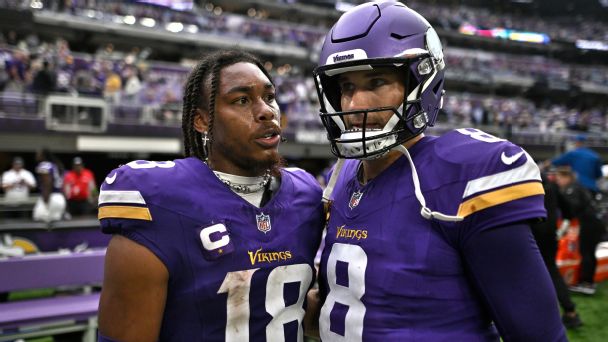
EAGAN, Minn. — The Minnesota Vikings are off to a 1-4 start this season despite an NFL-leading stretch from Justin Jefferson. How much worse could it get now that the wide receiver will miss four games, and possibly more, while on injured reserve with a strained right hamstring?
That’s the question reverberating Tuesday throughout Minnesota, where Jefferson has emerged as one of the league’s best players. Even before news broke of the severity of his injury, ESPN’s Football Power Index (FPI) considered the Vikings twice as likely to earn a top-10 pick in the 2024 draft (41.5%) versus a playoff spot (20.3%). Without Jefferson, and the accompanying advantages his presence brings to other players, the Vikings will be forced at least to consider some existential questions about this season and beyond.
No matter how the Vikings adjust, it will be easier to defend their offense than it had been. Moreover, Jefferson can’t return until after the Oct. 31 trade deadline, and his absence must be seen in the context of the Vikings’ failed effort this summer to sign him to a long-term contract extension. Finally, three prominent starters — quarterback Kirk Cousins, linebacker Danielle Hunter and receiver K.J. Osborn — are on expiring contracts and therefore are potential trade targets.
Let’s consider the short- and long-term impact of Jefferson’s injury as the Vikings try to pull themselves together for a stretch of games that on paper is more forgiving than the one they just completed.
How long will Jefferson be out?
Injured reserve rules dictate he will miss at least four games: road contests at the Chicago Bears, Green Bay Packers and Atlanta Falcons along with a home game against the San Francisco 49ers. The earliest he could play is in Week 10 against the New Orleans Saints, but there is no guarantee he will.
Why not?
On Monday, coach Kevin O’Connell made clear the Vikings do not want Jefferson back on the field until he is fully recovered. “We’re going to do what’s best for Justin and make sure we give him the treatment and plan that is a big-picture positive for him,” O’Connell said.
Recovery times from soft tissue injuries vary, but it stands to reason that a receiver with a significant hamstring injury would struggle to maintain effectiveness. The current four-week time frame is best viewed as a function of the minimum duration of an IR stay rather than as an estimate of his recovery process.
Is the fickle nature of hamstrings the only reason for the uncertain time frame?
Frankly, no. Jefferson’s contract remains an unresolved issue. He and the Vikings tried and failed to reach common ground on a contract extension this summer, leaving Jefferson to receive a base salary of $2.4 million this season and $19.7 million in 2024 if there is no agreement before then.
To be fair, Jefferson insisted that his mindset wouldn’t change when talks broke off last month.
“At the end of the day,” he said at the time, “all I can do is play football. And that’s what I continue to do. I know my team. My team doesn’t care about the contract, you know? And I don’t either. I just want to be here for my teammates, play for my teammates and of course get these wins.”
And let’s not kid ourselves. Jefferson’s long-term negotiating position is unlikely to be affected by lower production that resulted from playing at less than 100% for a portion of this season.
But there are plenty of examples of players for whom a seemingly routine injury became chronic. Consider the Saints’ Michael Thomas, who suffered through three seasons of foot and ankle injuries 2020-22, altering his Hall of Fame trajectory, before returning to form this season.
As ESPN’s Adam Schefter suggested, Jefferson would have limited incentive to rush his return for a lost season. But that doesn’t mean he would sit out games if he were fully healthy.
Are we sure the Vikings want him back as soon as possible?
It’s true that every loss the Vikings suffer will put them closer to the top of the 2024 draft, where they could potentially select Cousins’ successor at quarterback. And it stands to reason that they have a better chance to lose without Jefferson than with him.
To this point, however, we have no evidence that the Vikings are ready to give up on their season. And it should be noted that although they’ve played the NFL’s ninth-most difficult schedule so far, according to ESPN Analytics data, their remaining schedule is the league’s ninth-easiest.
0:54
Should the Vikings trade Kirk Cousins with Justin Jefferson out?
The “Get Up” crew debates whether the Vikings should move on from Kirk Cousins with Justin Jefferson on IR.
Does that mean they won’t unload veterans at the deadline?
The Vikings will play the Bears, 49ers and Packers before having to make that decision. But even if some in the organization think it would be better for their long-term success, such an admission would be an unprecedented moment in the Wilf family’s 19-season tenure as owners.
The Vikings have never intentionally given up on a season during that time, and the Wilfs’ deep-seated belief in competing for the playoffs every season is one of the primary reasons the team did not tear down its roster upon hiring O’Connell and general manager Kwesi Adofo-Mensah last year.
Why not get a return on veterans who might move on?
Ultimately, that question will be the leverage point of any internal deliberations.
The case of Cousins would be especially complicated. Even if a team stepped up with interest, he could veto any deal because he has a full no-trade clause in his contract. Cousins also has a free path to free agency in March, when he could weigh all offers.
Meanwhile, the Vikings don’t have an heir apparent on their roster. Backup Nick Mullens has been suffering from back stiffness, and rookie Jaren Hall, a fifth-round draft pick, hasn’t shown any indication he is a high-end prospect.
Hunter, Osborn and even left guard Ezra Cleveland — who is also in the final year of his deal — would be easier deals to make. Hunter’s restructured contract prohibits the Vikings from using the franchise or transition tag next spring. As with Cousins, Hunter has a guaranteed trip to free agency if he wants it.
Finally, the decision to draft receiver Jordan Addison at No. 23 this past April suggested they would probably let Osborn depart via free agency.
What will the Vikings do in the meantime?
O’Connell, who calls the Vikings’ offensive plays, will have to deal first with what is likely to be a dramatic shift by opposing defenses that are no longer pulled toward Jefferson. The challenge, O’Connell said Monday, is “how can we continue to activate a lot of things when a lot of our pass game has really been built around so much coverage being deployed to Justin.”
Addison, who leads the league’s rookie wide receivers with three touchdown receptions, is likely to be the beneficiary of increased targets. Cousins issued him a massive endorsement after Sunday’s game, saying: “Jordan is the real deal. We hit on that draft pick. He’s a great player.”
Speaking Monday in the Vikings’ locker room, Addison said he is just starting to get comfortable at the NFL level.
“I still feel like I’m not scratching the ceiling of where I will be in this league,” he said. “Every week I’m trying to improve on something.”
Will it be that simple?
Unlikely. In the immediate aftermath of Sunday’s game, O’Connell touted the depth of a wide receiver group that also includes N’Keal Harry, the New England Patriots‘ first-round pick in 2019.
But he also hinted that the offense has enough versatility to shift away from its aerial mentality. With Jefferson in the lineup, the Vikings have thrown an NFL-high 204 passes and have the second-fewest carries by running backs (82).
“The beauty of having [fullback] C.J. Ham and three tight ends and multiple backs is we can reinvent ourselves whatever way we feel is the best way to try to move the ball and score points,” O’Connell said.
So, is the Vikings’ season cooked?
There is a high probability that it is — and that answer would be the same even if Jefferson were healthy. Of the 161 teams that have started a season 1-4 since 1990, 150 have missed the playoffs. The Vikings would be trying to do something that has happened 7% of the time over the past 33 seasons of NFL play.
The real question is whether the Vikings agree, and if so, what they do about it.

